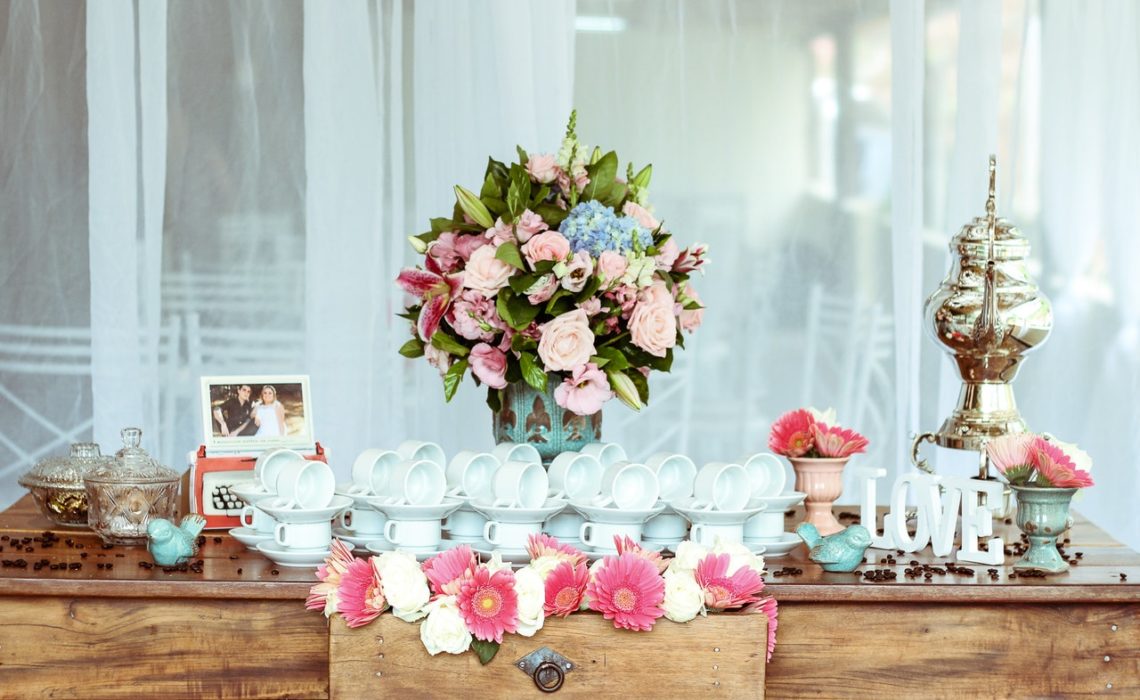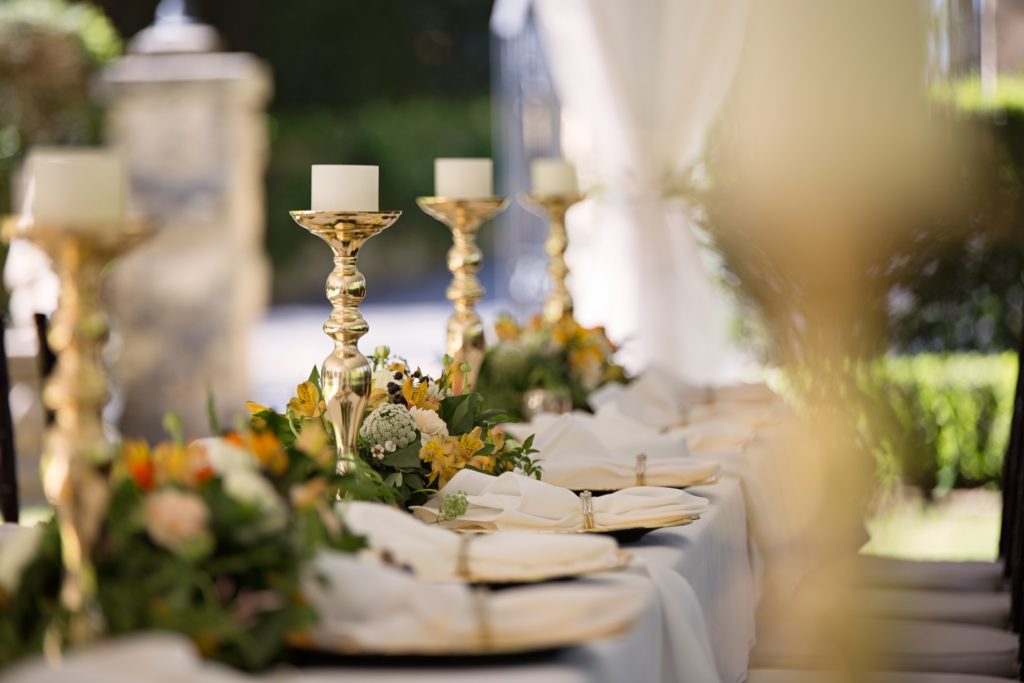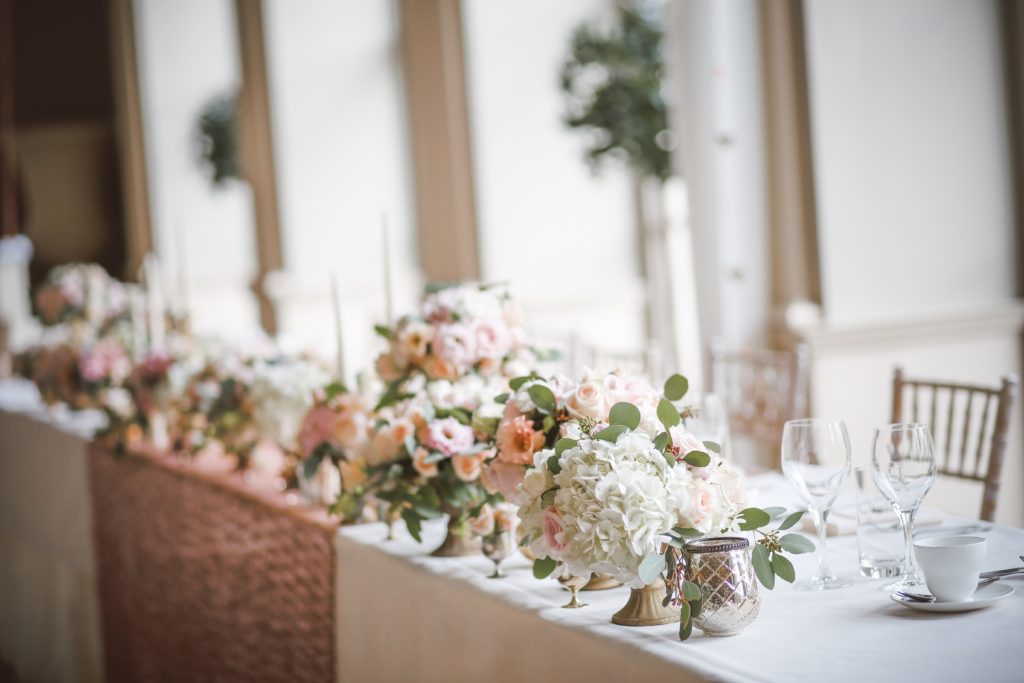
Choosing your wedding colors is one of the first decisions you’ll make for your special day. That decision simplifies other wedding-related decisions, too—like napkin color, flower type, and bridesmaid dresses. In some cases, you’ll even choose your wedding colors before you choose the venue. (After all, bright orange and blue won’t match the beachfront property you’ve got your eye on.) But if you’re not an artist or designer, you might be nervous about choosing the right colors.
The good news is there are lots of ways to choose your wedding colors! We’ve highlighted four of the best methods below, including specific questions to ask yourself. You can use just one method of color selection, or create four separate lists and see what colors keep showing up. If sage green is a favorite color that would match your venue and complement your spring wedding—it’s a winner!
Consider Your Favorites
Ask Yourself:
What colors do I like? What colors don’t I like?

Choosing colors that you—and your fiancé!—love is a simple way to establish your wedding colors. If you’re drawn to a particular color, why not use it for such an important day! We recommend choosing colors that you like for decorating, and not necessarily for wearing. Of course, those might be the same colors!
But if you prefer to wear funky patterns and neon colors—you’ll have a hard time finding flowers and linens to match. On the other hand, decorating with the soft blue or deep gold you love so much will be much easier. And if it’s a favorite interior color, chances are you already have practice decorating with it in your home or office. Now, you just need to apply that creativity to your wedding!
Consider the Season
Ask Yourself:
Do I want to emphasize the season? Or complement it?

Think of the outside colors as freebies! Every seasons comes with its own colors—fall and winter bring reds and grays, while spring and summer shout greens and yellows. Your own wedding colors can emphasize those seasonal hues, or complement them for a fuller palette. For example, you can choose warm oranges and reds for your fall wedding, to enhance the surrounding foliage. Or you can incorporate rich purples to complement the setting, without calling attention to it.
This doesn’t just create a seamless indoor-outdoor look; it also means your wedding photos will look stunning. Because the wedding party and the decor match the setting, everything looks like it belongs together. You’re not wearing pink dresses in front of an orange-and-yellow backdrop!
Consider the Venue
Ask Yourself:
Is my venue indoors or out? Natural or ornate?

Like we briefly hinted in the introduction—the venue is a big part of your color palette. Certain colors look better with certain venues, and if you don’t know which colors to choose, use the venue for inspiration. You can play off of the natural materials inside, or pull in the hues from the outside. For example, champagnes and rose golds will create a monochromatic feel in your bright space full of windows. Or use greens, leaves, and branches to unify your decorations with the exposed barn beams.
Of course, if you already have colors picked out, you’ll want to coordinate your venue. As you’re browsing venues online or visiting them in person, scroll through their portfolio of past events. See what other couples have done for their wedding day—or even other private events. You might just be inspired!
Consider a Color Scheme
Ask Yourself:
Do I prefer monochromatic colors? Or complementary ones?

Creating a wedding color palette can be tricky, even with inspiration from Mother Nature and your venue. After you put “blue” on your list, you have to decide between tints of blue (adding white to lighten) or shades of blue (adding black to darken). If you’re struggling with your wedding colors, take a step back and consider a color scheme—not a color palette. While a palette has specific colors, a scheme determines how they all relate to each other.
You can choose a monochromatic scheme, which is simply variations of a single color. Or, you can choose a more complicated complementary or analogous scheme. Complementary schemes have colors that are on opposite sides of the color wheel, like navy blue and soft orange. On the other hand, analogous schemes have colors that are next to each other on the color wheel, like yellow orange, orange, and red. Consider the look you want first, before choosing specific colors.
Conclusion
At the end of the day, picking your wedding colors should be fun! Between mentally arranging bouquets, and wrapping silverware in colored napkins, your wedding vision should start to come alive. But if no color truly seems right—skip them! Create a neutral wedding with whites and golds, or grays and silvers. And then add a pop of texture for visual interest.
What colors are you envisioning for your wedding? What colors will you absolutely avoid?


